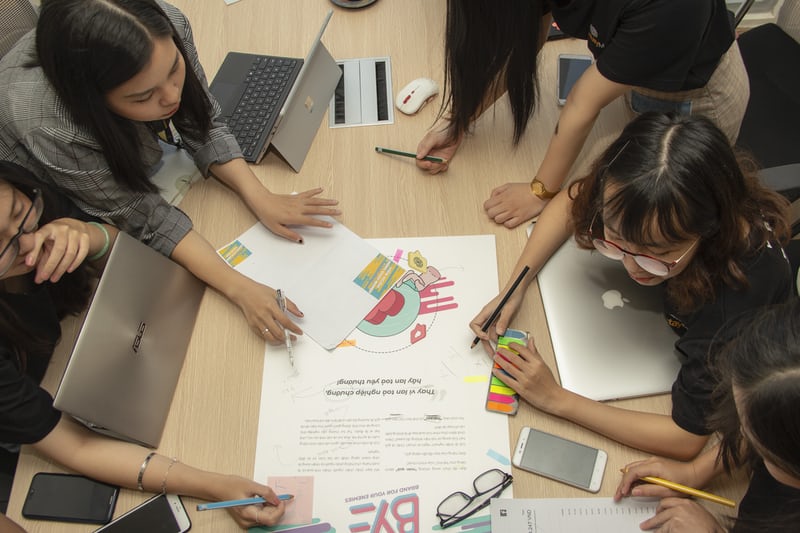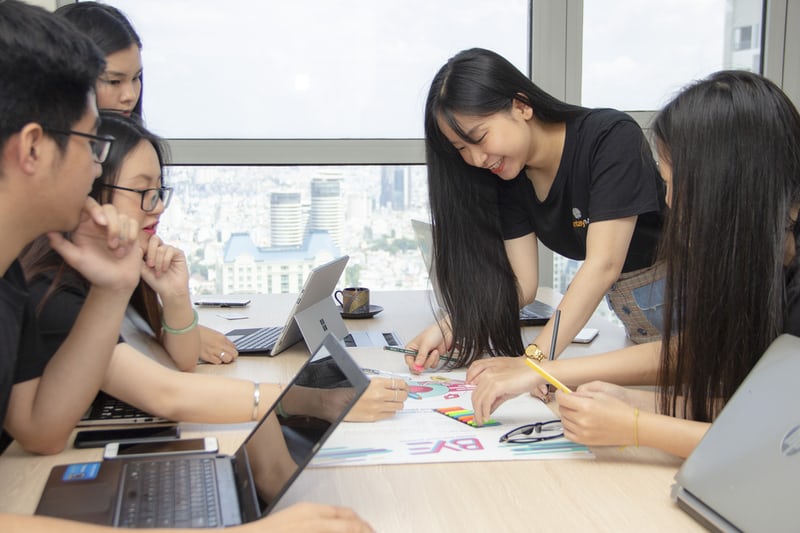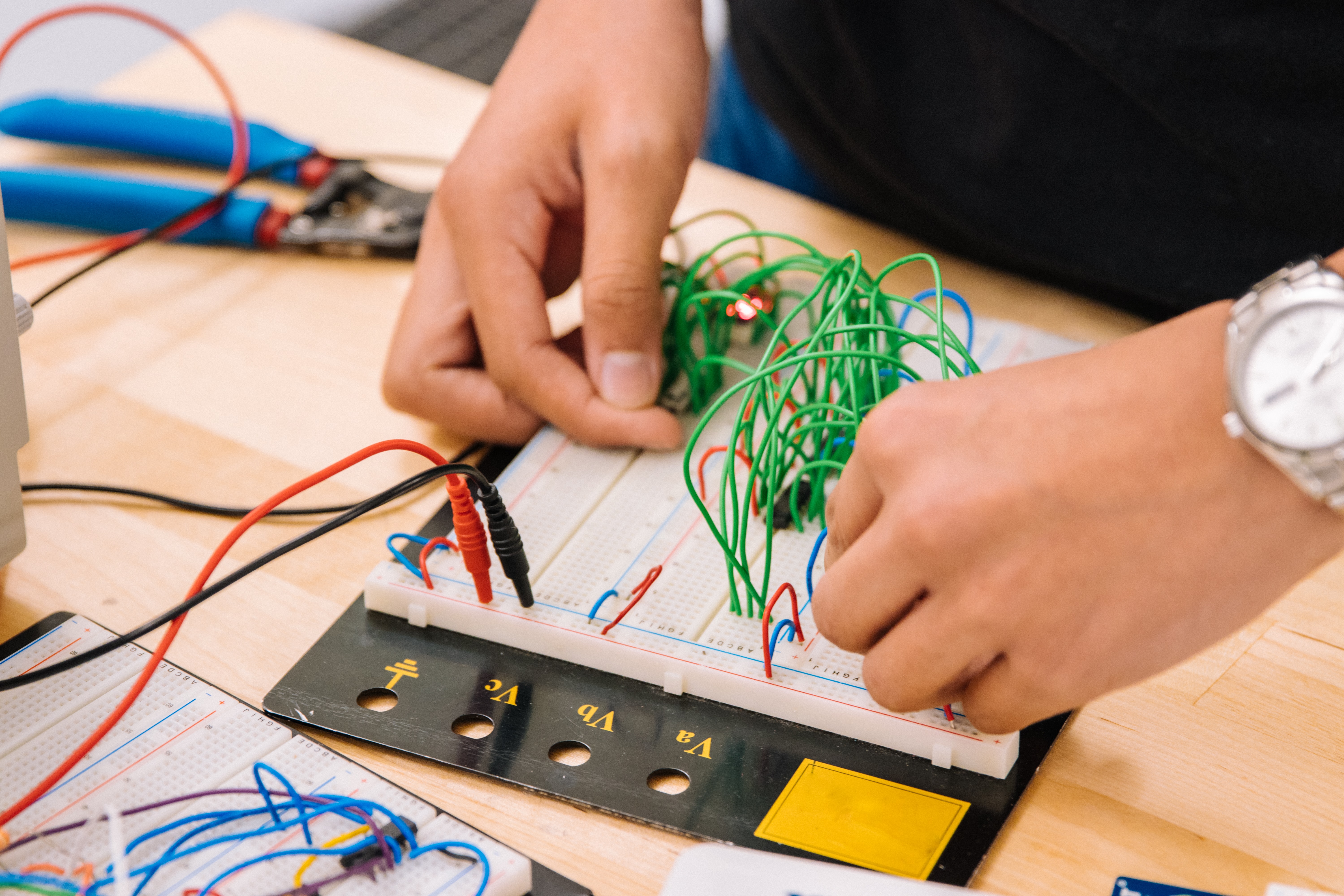Learning can take many forms throughout a lifetime. There are times when you learn to speak and write, through repetition and reinforcement. There are moments when you learn a new sport such as soccer and you must go onto the field, kick a ball around, do drills and exercises, and actually play the game to learn. In some instances, you learn by teaching.
Throughout your life you will learn, unlearn, relearn and continue this process multiple times. One thing that has adapted over time is the need for active learning. The old learning models of passive learning and lectures are not reflective of what the workforce needs or what employers demand anymore. One of the biggest downfalls to this form of learning is the increase in achievement gaps amongst students. If everyone is being taught the same, everyone needs to have the same opportunity to learn, but everyone learns differently and traditional learning methods don't accommodate for this well at all.
Ultimately, the true way to understand a concept is to be actively engaged in learning. It is easy to be mistaken by the old, traditional methods of teaching and learning. Passive learning through lectures was the standard for decades (and still is, unfortunately). But in today’s world, with the ever-growing changes in technology, passive learning is not going to develop the key skills required for success in the workplace. Further, passive learning has not kept up with how learners learn today and the changes that the digital world and devices have put upon learners. Many students, faced with having to learn X in Y amount of time via a passive learning system, are also facing an achievement gap, which has long-term effects on their access to education and thus jobs.
In order to tackle essential challenges, such as the achievement gap, an active learning approach needs to be implemented. This method of learning enables students to be more responsible and flexible with their learning. Not only does it allow students to try and fail different approaches, but it enables them to understand concepts by doing rather than by hearing. Taking notes on a lecture will never compare to actively learning the concept and putting it to the test in the real world.

Active vs Passive Learning
Active learning and passive learning differ in so many ways. To better understand the difference between the terms, PNAS states, “Following earlier work, we define traditional lecturing as continuous exposition by the instructor with student involvement limited to occasional questions; we define active learning as any approach that engages students in the learning process through in-class activities, with an emphasis on higher-order thinking and group work” (PNAS).
Some examples of active learning include:
- Discussions
- Games
- Practice
- Role plays
- Surveys
- Case studies
- Scenarios, including real-world scenarios
- Group-work/teams
- Worksheets
- Trial and error
- Paired discussion
- Problem solving, from simple to highly complex
- Collaboration
- Communication
- High engagement
- Reflection
- Team-based structured learning
- Simulations
- Practical Tasks
- Projects, including real-world projects of varying complexity and difficulty

Examples of passive learning include:
- Lectures
- Reading
- Powerpoint presentation
- Watching a video
- Modeled instruction
- Podcasts
- Books
- Observation
- Sitting in a classroom

Some of the ways we implement active learning in our curriculum is through activities and events such as coding collaboration sessions, live coding, and peer-code-reviews. These are so important to the success of our students and graduates. By using active learning methods, our learners understand their code better, how to debug, and are in control of their own learning.
The Value of Active Learning
As noted in the Harvard article, “Study shows that students in ‘active learning’ classrooms learn more than they think.” This is important to remember when considering the misconceptions amongst students and whether they believe active or passive learning is better. Through active learning, a learner is able to receive feedback and improve upon their skills. They are able to communicate more openly and use external resources to learn. Peer learning is a useful resource that active learning encourages to engage students and suggest different methods of approaching a problem. They can explore and discover through more avenues than with the narrower methods of passive learning. This kind of learning is more engaging which leads to higher retention which helps to close the achievement gap.
With passive learning, information cannot be learned quickly which often slows down learning abilities. This also widens the gap in educational achievement through taking a longer length of time to learn just one concept. Not every student will truly comprehend immediately after hearing a teacher recite information. This is especially true in instances where students also aren't given time/opportunities to clarify and ensure an actual understanding of the topic is met. This creates an achievement gap for a vast percentage of students who don’t learn by hearing.
Active learning enables students to learn their skills in more detail and understand the meaning behind their topics. It gives students the confidence to take control of their learning and find methods that best suit them personally. In active learning, students are in an environment where the emphasis and focus is actually on learning and getting everyone up to speed, not just those who thrive on lecture-based learning.

Closing the Achievement Gap
As the achievement gap grows wider and wider in recent years, an educational solution is more pertinent than before. Learners need to achieve the same skills, knowledge, and opportunities as their peers. The style of learning needs to be flexible and best suited to the individual learner. With methods such as passive learning, there is no flexibility, as it demands the student to be an auditory learner. This is not the case for many students and causes a huge gap in achievement for students worldwide. Every student will learn and comprehend information differently, which creates a need for an active learning approach in classrooms across the world.
The detrimental effects of the achievement gaps have caused an increase in income inequality, and a lack of diversity. These are just some of the reasons why the achievement gap needs to be addressed. As mentioned by PNAS, “Widespread implementation of high-quality active learning can help reduce or eliminate achievement gaps in STEM courses and promote equity in higher education.” (PNAS) This is the goal and focus of learning for the 21st century through engaged learning. 21st century skills cannot be developed through passive learning and this is what leads to today’s educational achievement gaps. An even bigger concern is that students are graduating into jobs that require 21st century skills that come from active learning. In today’s highly digital world, students will benefit from being taught with active learning methods. Learning happens by doing. You need to actually try methods out, fail at times and find creative solutions, and efficiently solve problems.
PNAS suggests a solution to the achievement gap by noting, “We propose that two key elements are required to design and implement STEM courses that reduce, eliminate, or reverse achievement gaps: deliberate practice and a culture of inclusion.” These two suggestions are crucial in theory and practice. Deliberate practice can be achieved and repeated through active learning methods such as those described above. Inclusive teaching should be the standard across the board to teach each student with respect and interest in their personal growth, for underrepresented students especially.
Conclusion
Comprehension is key to evaluating whether a learning approach is effective. In active learning, students are far more likely to remember and comprehend things that they did, saw, and wrote and far less likely to to recite things they read or heard. It is so important to consider some of the effects of not implementing active learning in terms of the achievement gap and accessible education. Students are more responsive to engaging activities and methods of learning that allow them flexibility in understanding concepts through a variety of formats. Many will resist the shift from the old traditional passive learning models to the newer, more engaging active learning models, but it is still essential to progress and close achievement gaps.


